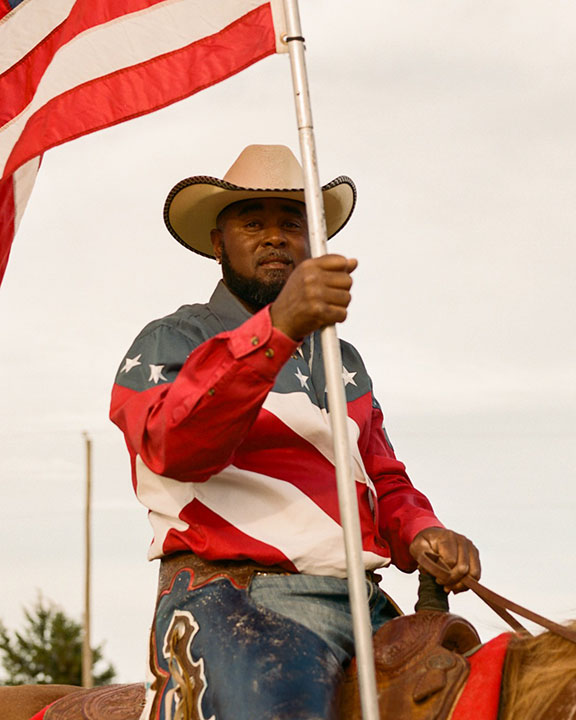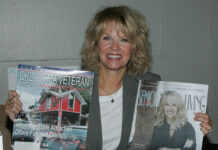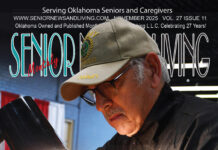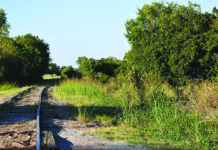Story by Darl DeVault, contributing editor, photos courtesy of the artist
The free upcoming photography exhibition, “Jakian Parks: The Black Land,” at Oklahoma Contemporary Arts Center in downtown OKC, celebrates what Oklahomans know well: rodeo culture. This exhibition takes it a step further by imbuing Black rodeo with profound cultural significance.
It displays photos of Black cowboys as a dynamic symbol of survival, resilience, and the reclamation of identity, while reminding the world that photo-documentarians are important.
Opening on November 6 and running through June 1, 2026, the exhibition features Parks’ photography to challenge historical narratives and honor a deeply rooted, yet often overlooked legacy of Black equestrian life in Oklahoma and the West.
Traditionally, the dominant image of the American West has been a whitewashed one. Parks is resisting this historical erasure and its stereotypes by showcasing Black contributions to cowboy and equestrian culture. While largely ignored throughout America, Parks’ photography exhibition boldly and directly confronts this historical exclusion, restoring visibility and dignity to Black cowboys and families.
Challenging those stereotypes of exclusion, Parks’ portraits capture a “quiet grace” that resists the negative stereotypes and invisibility historically imposed upon Black bodies. His work presents his subjects with authenticity, full agency and humanity.
“A cherished aspect of this process was learning more about the Black towns around Oklahoma,” Parks said. “Visiting historical figures and lands to discover more about my own history was very inspiring. This pushed me to dig as deep as possible into Black archives.”
As a documentarian, the photographer shares the critical visual archive he is building of Black agricultural and equestrian traditions. By doing so, he ensures this cultural memory is preserved and passed down, bridging the gap between past and present and actively resisting the forces of erasure.
“The Black Land” reframes the complex relationship Black people have with the land by reclaiming a spiritual connection to it. Oklahoma’s Black cowboys, such as Bass Reeves and Bill Pickett, and cowgirls working the land from horseback, command historical attention as they helped build a place in American history.
The exhibition title acknowledges the duality of this connection—a history marked by forced labor and stolen land, alongside the deep knowledge and resilience that grew from it.
By celebrating resilience and the persistence needed to survive, the exhibition shows how Black communities have transformed a painful history into a source of enduring strength. Scenes of rodeo, gospel choirs, and quiet family moments illuminate Parks’ sense of spiritual and communal resurgence.
Parks’ journey of researching Oklahoma’s historic Black towns and archives for the project underscores the project’s personal and ancestral nature. His photographs are a tribute to inherited land and independence, honoring the wisdom passed down through generations.
By showcasing Black rodeo culture in a prestigious institutional art setting, such as Oklahoma Contemporary, the exhibition elevates the tradition to a larger audience and serves as a point of pride and inspiration for younger Black generations.
To promote representation, Parks founded the nonprofit “Oklahoma Cowboys” to address the lack of visibility in mainstream rodeo culture. The organization aims to empower Black youth by showing them that rodeo is a viable path, expanding their horizons beyond basketball courts and football fields.
By elevating community stories, his visual work is driven by storytelling. It gives voice to individuals and communities whose stories have been overlooked by mainstream narratives, placing their rich and vibrant culture on center stage.
His photographs affirm Oklahoma’s rich Black heritage, an area steeped in the rich but often-forgotten history of Black settlements and entrepreneurship. This exhibition seeks to make that history especially significant.
By highlighting local themes focusing on Oklahoma’s Black rodeo traditions, Parks directly addresses the local context. His work draws attention to the state’s Black towns and the unique equestrian history that has shaped them.
Parks, 23, was born in South Oklahoma City and raised in the nearby suburb of Yukon. Growing up in Yukon, He found his artistic inspiration at Young Achievers Christian Academy in northeast Oklahoma City. The exposure to “real Black culture and history” at the school had a profound influence on his photography, which often explores themes of Black heritage and equestrianism.
“The Black Land is a ceremonial parade of the admiration and respect we have for ourselves and our ancestors,” exhibition guest curator Chloe` Flowers said. “The overlap between faith and forward action creates a supernatural progression for Black people. I hope viewers are able to see their reflections in the work and implement more advancement into their lives.”
The exhibition honors local heroes and traditions, from the famed Boley Rodeo to Parks’ memories of the Black cowboy tradition, influenced by his late aunt, Shay Nolan. It places Oklahoma’s Black community at the center of the American West’s historical narrative, where it has always belonged.
Admission to Oklahoma Contemporary is free to ensure accessibility for all community members.















